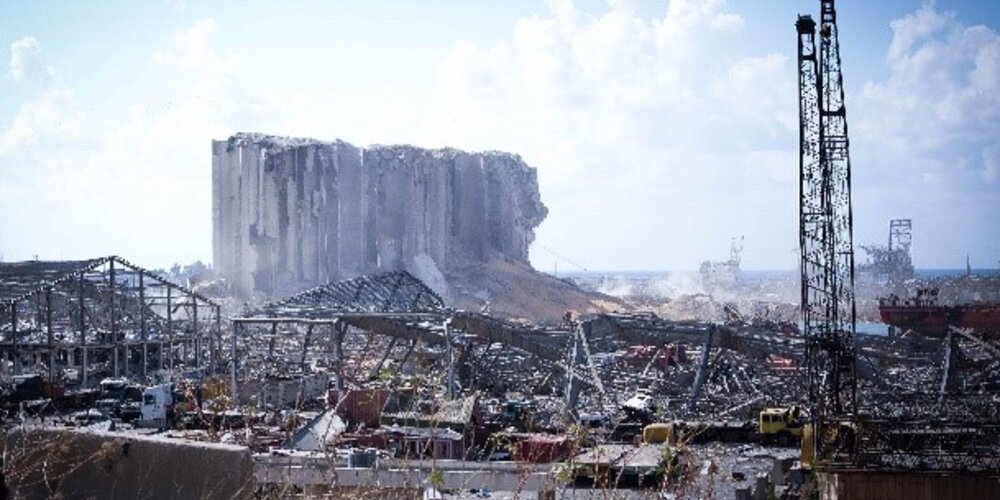TT Talk - Whitepaper on storage and handling of dangerous goods

TT was pleased to be one of the endorsers of an important warehousing whitepaper on ‘storage and handling of Dangerous Goods in preparation for, or after, sea-transport’ issued by four industry organisations. This whitepaper valuably seeks to bridge any gaps between international regulations and local practices.
Written specifically in the context of two major warehouse incidents that have occurred in the last decade (Tianjin in 2015 and Beirut in 2020), the warehousing whitepaper issued by, ICHCA International, IVODGA, National Cargo Bureau and World Shipping Council sets out detailed good practice guidance for all those involved in handling and storage of Dangerous Goods that are at rest in transit, somewhere between the point of origin and the intended destination, typically in a port area.
Look beyond the headlines
Major incidents inevitably attract substantial attention, often concentrating on causation and prevention; some investigations – such as the UN/OECD sponsored seminar following up on the Beirut explosion – additionally track a history of similar lesser events. Such less startling incidents, together with near miss events, deserve greater publicity in the congested supply chain world since each may have the potential to be catastrophic. The fire investigation fraternity warn that up to half of all warehouse fires are intentionally set, followed by electrical failures or malfunctions, including arcing (typically approaching 20%). Other recurring risks include 'hot work' and even smoking, both of which should be rigorously controlled by procedures.
Near miss events deserve greater publicity in the congested supply chain world since each may have the potential to be catastrophic
The incidents of most concern to this whitepaper relate to spontaneous combustion arising from self-reactive chemicals held in storage. The scale of the two referenced incidents, if they had occurred at sea, would have caused a total loss of the ship, probable loss of life and substantial pollution – but popular media interest might have been restricted to regional and short term comment. TT has frequently written and spoken on these maritime risks.
Fronting between international & national standards
This industry paper seeks to address the potential void between the international regulatory environment and what may happen during temporary or long term storage of goods before or after sea transport. The IMO itself sought to provide high-level guidance for this interface to national regulation in its ‘Recommendations on the Safe Transport of Dangerous Cargoes & Related Activities in Port Areas’ (MSC.1/Circ.1216) issued in 2007. These set out a range of minimum requirements including:
- Location, construction & size of facilities;
- Emergency service access/egress; and
- Containment
In a world where significant volumes of Dangerous Goods are transported internationally – generally understood to be in the region of 10% of all packaged goods, with an estimated additional 5% reflecting the murky criminal underbelly of misdeclared cargo – the reality is that the interchange between different modes of transport necessarily involves periods of storage. In the case of Tianjin, that was apparently temporary, whereas Beirut revealed and exemplified the added risks relating to long term storage and abandonment of cargo.
This paper addresses the lack of uniformity relating to the handling, consolidation and storage of Dangerous Goods in port areas and other land-based facilities, deftly interfacing with the varied national and local standards that may well be in place and potentially enforced, to provide practical guidance for ‘systematic and documented management of Dangerous Goods’. The comprehensive advisory consolidates much sound practice, addressing a total of eight critical areas of consideration, being:
- Adherence to applicable standards
- Ensuring holistic consideration of workforce practices
- Baseline standards of warehouse construction and protections
- Essential operational controls
- Arrangements specific to the storage of Dangerous Goods
- Risk management relating to fire and explosion
- Implementing security measures
- Establishing emergency response
Assess your specific risks
One of the key themes running through this guidance is the criticality of risk assessment. The level of sophistication and availability of resource to tackle such a wide ranging set of issues will inevitably vary considerably around the globe, which merely underlines the importance of engaging with this material. The guidance set out cannot be ‘one size fits all’, with the result that careful consideration is required to apply the learnings and, in each local setting, take determined steps to improve safety and security, and thereby prevent avoidable incidents of whatever scale.
Careful consideration is required to apply the learnings and, in each local setting, take determined steps to improve safety and security
The guidance incorporates a checklist, that is also available separately as an editable PDF, which could easily be utilised as a complete risk assessment template. This is a formidable piece of work at just shy of 180 questions – taking an equal number of pages as the guidance itself. The checklist follows the same designation into eight critical areas, in places extending beyond the guidance provided in the whitepaper, with detailed supplementary explanations, together with links to external material (but not to the whitepaper itself).
Clearly, it is important for ports, terminals and warehouses to be on top of local or national regulations in respect of all operational aspects. Since such actors are also necessarily dependent on complete and accurate Dangerous Goods declarations, thorough risk assessments need to take the presence of such goods ‘front and centre’, including ensuring that all neighbouring stakeholders (such as operators, emergency responders, enforcement agencies etc) are appropriately equipped and trained for any eventuality. And, naturally, in such communities there are reciprocal responsibilities – each potentially presenting risk as well as vulnerability.
While this industry paper explicitly does not address the risks relating to longstanding containers and abandoned cargoes (which are intended to be tackled in an associated paper) diligent attention to what is set out already will substantially assist in being prepared. Quite simply, there is no room for complacency in any storage setting globally. TT Club commends this work.
-
If you would like further information, or have any comments, please email us, or take this opportunity to forward to any others who you may feel would be interested.
Documents
TT Talk 284 Chinese Translation (648 kB) 25/03/2022
- Author
- Peregrine Storrs-Fox
- Date
- 08/03/2022





